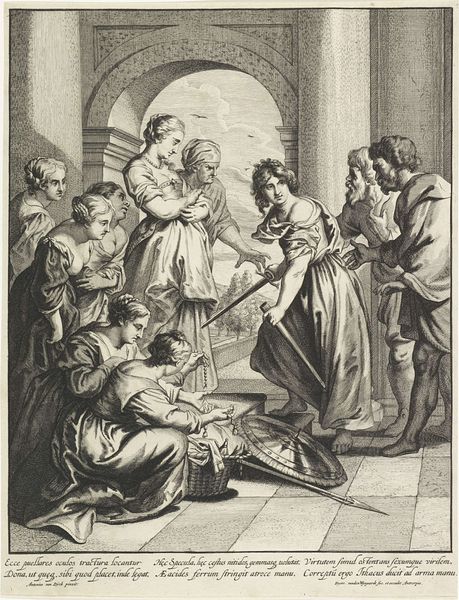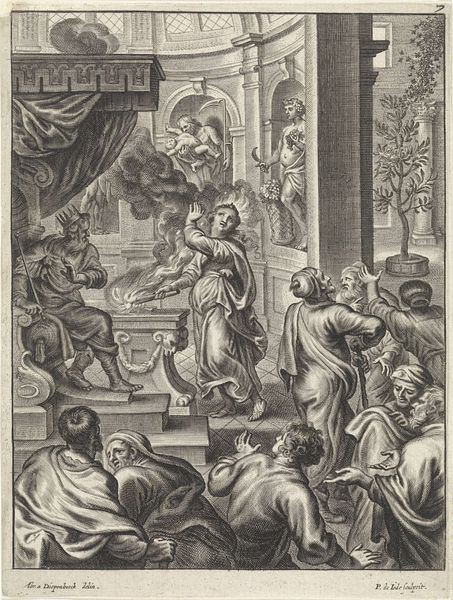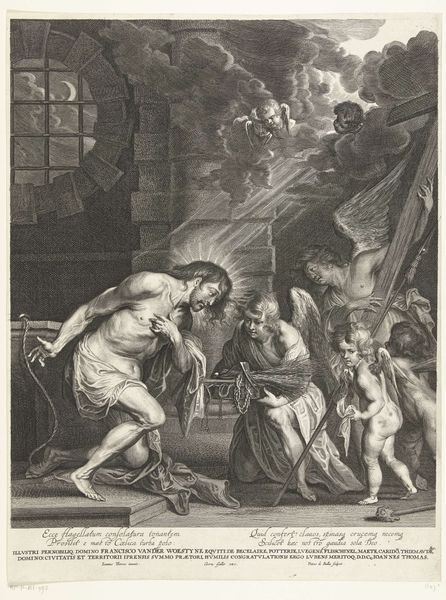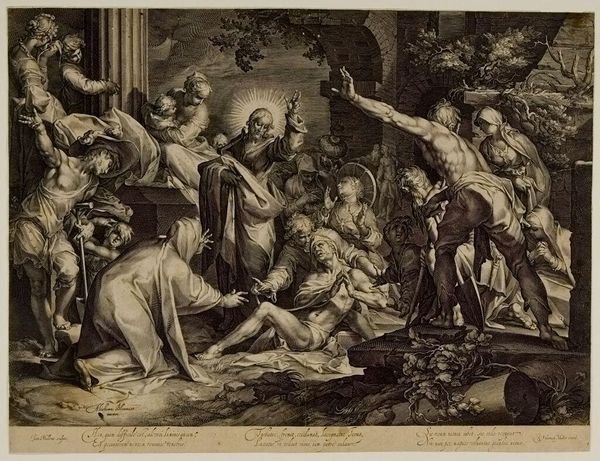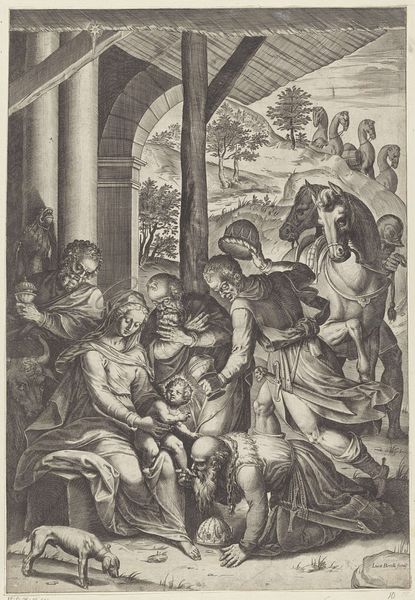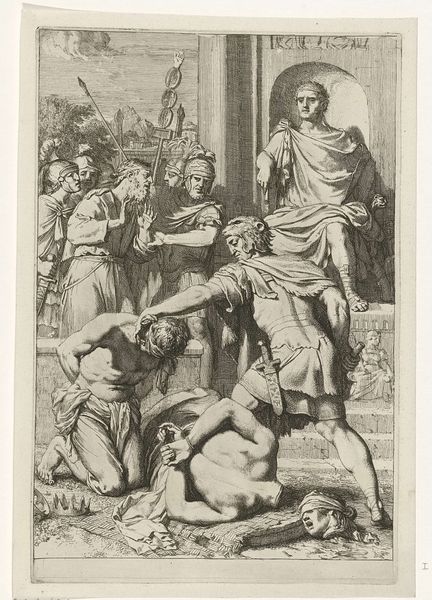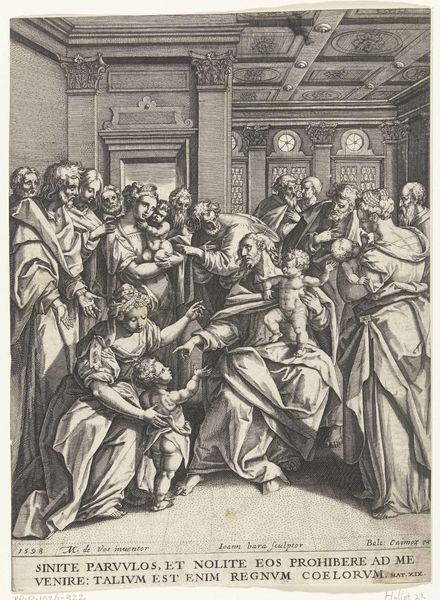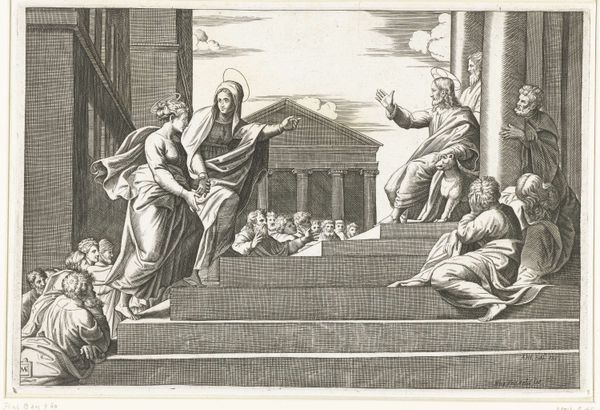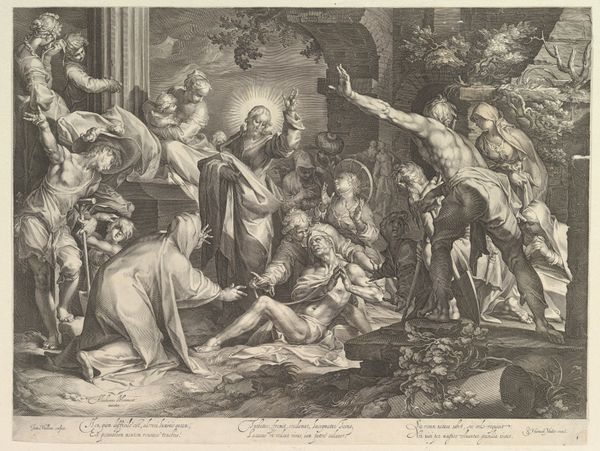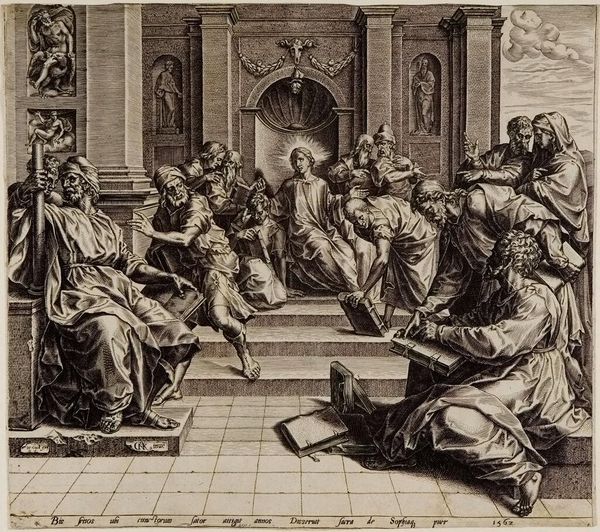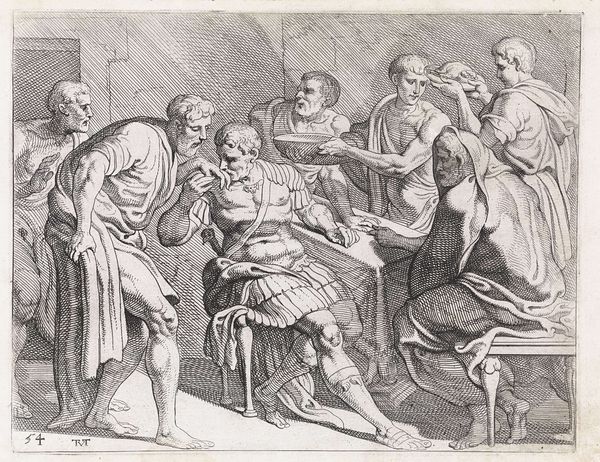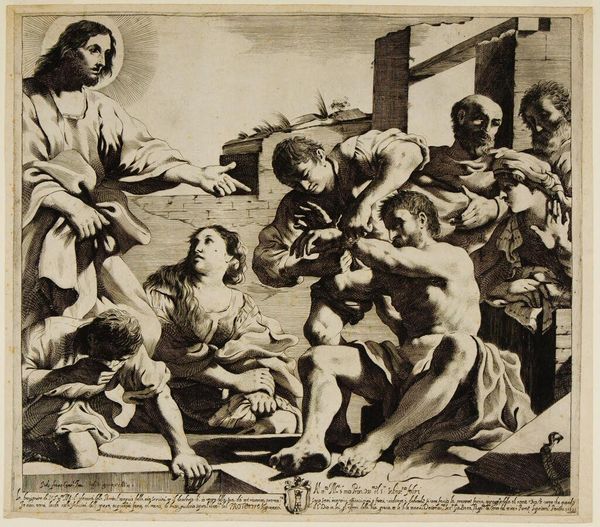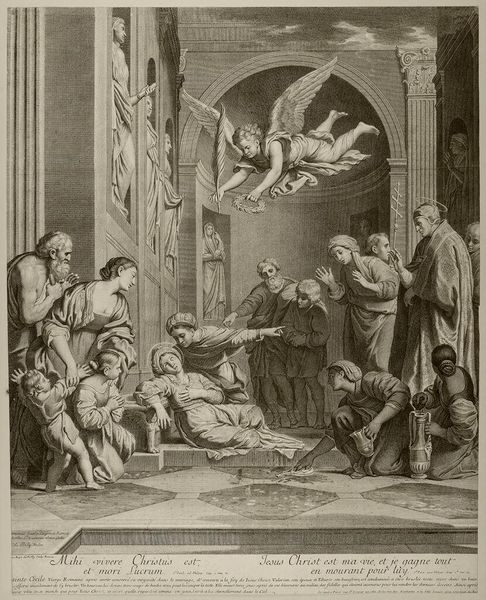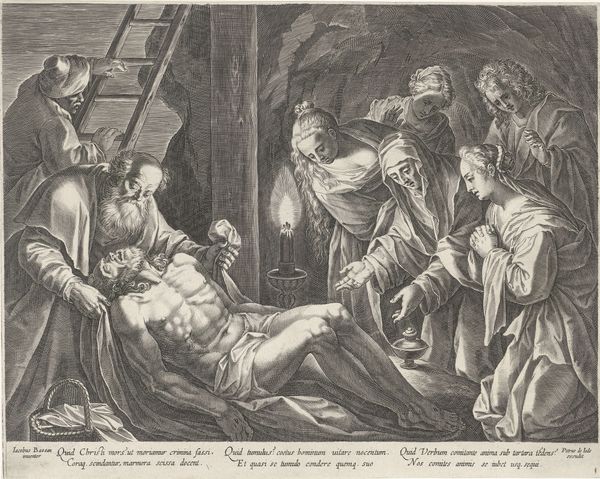
painting, oil-paint
#
narrative-art
#
baroque
#
painting
#
oil-paint
#
figuration
#
chiaroscuro
#
history-painting
Copyright: Public domain
Editor: We're looking at Nikolaus Knüpfer’s oil painting, "The Denial of Saint Peter," created in 1640. The scene is cast in shadow, but there's a definite tension between the figures illuminated near the center. What stands out to you in this work? Curator: What strikes me is the way Knüpfer stages the scene within a plausible historical setting, imbuing it with the socio-political realities of the time. Consider the choice of this specific biblical scene: Peter's denial. Knüpfer doesn't simply depict a religious narrative; he's presenting a crisis of faith, potentially mirroring the uncertainties and anxieties present in the 17th century during a period marked by conflict. Notice how Peter's open gesture suggests both denial and pleading, questioning if this representation offers a commentary on individual responsibility versus social pressure within a hierarchical structure. Editor: That’s a perspective I hadn't considered. The figures in the background now seem less like observers and more like silent judges or representatives of societal forces. Curator: Exactly. The use of chiaroscuro further amplifies this tension, creating a theatrical effect where light and shadow symbolize moral ambiguity. What we interpret as a biblical story could also be read as a broader statement about power dynamics and the struggle to maintain integrity within oppressive systems. Where might the contemporary viewer find resonance? Editor: Thinking about how institutions can create an environment where good people make compromises is extremely interesting in our era, when we witness so many people bend to popular sentiment. This discussion made me understand the value of history to understand Knüpfer’s "Denial". Curator: And the painting, in turn, may allow you to read the present more deeply.
Comments
No comments
Be the first to comment and join the conversation on the ultimate creative platform.

